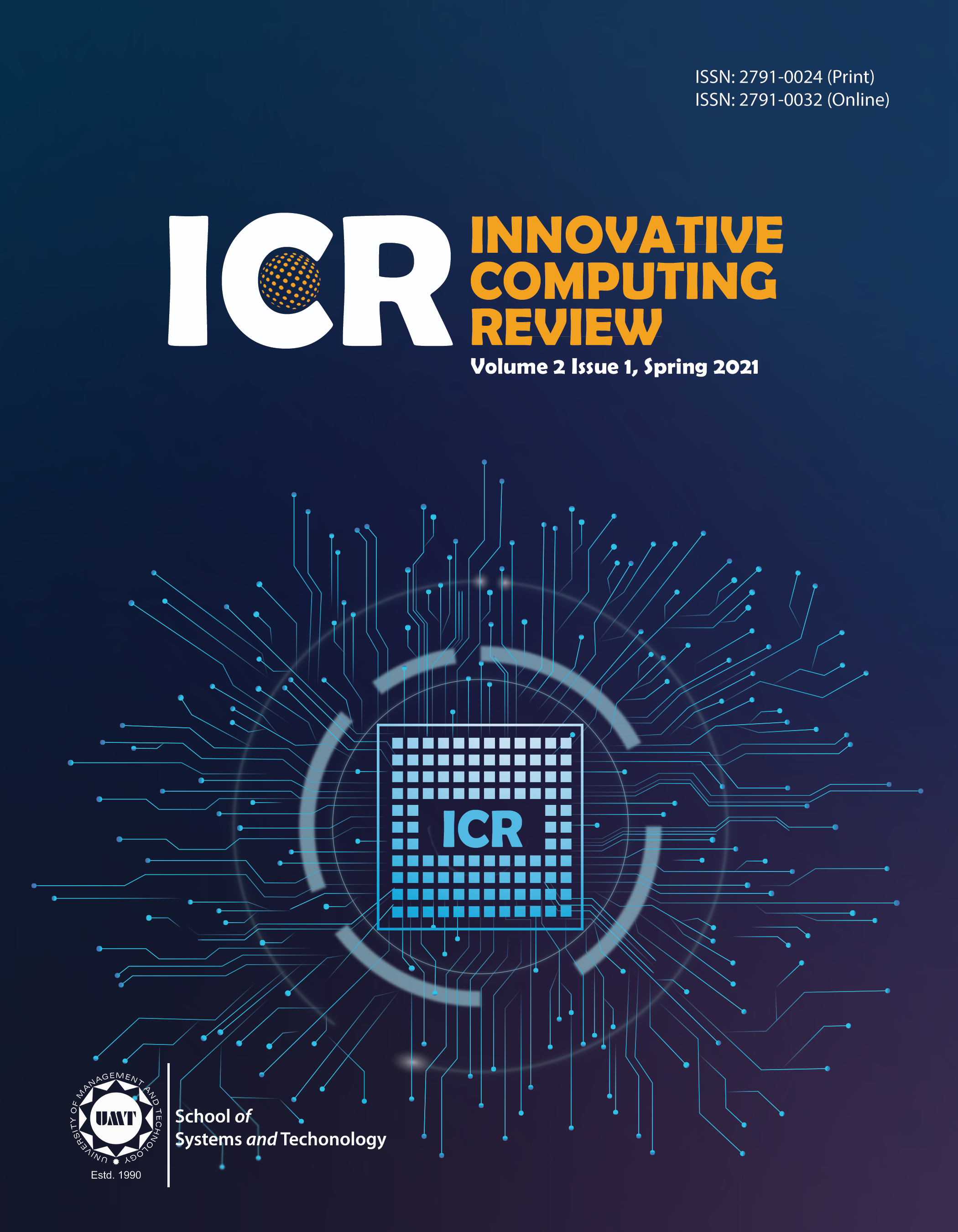Exploring Recent Trends in Blockchain Technology: A Systematic Literature Review
Abstract
 Abstract Views: 151
Abstract Views: 151
Blockchain technology is used to maintain the ever-growing list of data records. Blockchain can be an authentic ledger which includes applications such as fund transfers, settling trades voting, and several other useful components. However, there are still many underlying challenges associated with blockchain technology. Blockchain (database) is older but a new approach in information technology whose first implementation is Bitcoin (crypto currency). Bitcoin has also used Blockchain technology at its back end to keep a permanent record (chains of block) of all the data. Bitcoin is the primary appliance that formed decentralized surroundings
designed for Crypto money, wherever the participant is capable of acquiring and substituting production with Digital cash. Therefore, a confirmed contract could involve crypto cash, contracts, report, or other information. The current study aims to describe a comprehensive synopsis of the blockchain concept which could also be used in many other applications. The most essential material goods of blockchain are made with the aim
that there is no essential overseer or any centralized information storage space routine. Hence, Blockchain transactions occur only in peer to peer network which is distributed among several nodes. Therefore, Blockchain expertise could be an innovative implementation of possible applications, in favor of an organization that enables a safe and sound connection exclusive of the necessitated essential power. The current study proposed and analyzed the possible function of blockchains within a structure throughout a case examination. In addition to do a systematic literature analysis Blockchain technology is expected to bring developments in diverse fields, such as politics, economy, culture, industry, and business models. Therefore, the scholarly research discovered the variety of drivers designed for blockchain accomplishment while highlighting the barriers and risk inborn within the chunk string (Blockchain).
Downloads
References
Z. Zheng, S. Xie, H. Dai, X. Chen, and H. Wang, "An overview of blockchain technology: Architecture, consensus, and future trends." In 2017 IEEE international congress on big data (BigData congress), Sep. 2017, pp. 557-564, doi: https://doi.org/10.1109/BigDataCongress.2017.85
R. Herian, "The politics of blockchain." Law Crit., vol. 29, no. 2, pp. 129-131, July 2018, doi: https://doi.org/10.1007/s10978-018-9223-1
C. C. Agbo, Q. H. Mahmoud, and J. M. Eklund, “Blockchain technology in healthcare: a systematic review,” Healthcare,vol. 7, no. 2, p. 56, Apr. 2019, doi: https://doi.org/10.3390/healthcare7020056
P. S. G. A. Sri and D. L. Bhaskari, “A study on blockchain technology,” Int. J. Eng. Technol., vol. 7, no. 2.7, pp. 418-421, 2018.
.
L. Zhang, Y. Xie, Y. Zheng, W. Xue, X. Zheng, and X. Xu, “The challenges and countermeasures of blockchain in finance and economics,” Syst. Res. Behav. Sci., vol. 37, no. 4, pp. 691-698, June 2020, https://doi.org/10.1002/sres.2710
L. C. Arcos, “The blockchain technology on the music industry,” Braz. J. Oper. Prod. Manag., vol. 15, no. 3, pp. 439-443, July 2018, doi: https://doi.org/10.14488/BJOPM.2018.v15.n3.a11
A. A. Monrat, O. Schelén, and K. Andersson, “A Survey of Blockchain From the Perspectives of Applications, Challenges, and Opportunities,” IEEE Access, vol. 7, pp. 117134-117151, Aug. 2019, doi:https://doi.org/10.1109/ACCES S.2019.2936094
M. Singh, “Blockchain technology for data management in Industry 4.0,” In Blockchain Technology for Industry 4.0, R. da R. Righi, A. M. Alberti, and M. Singh, Eds., Singapore, Springer, 2020, pp. 59-72.
M. Kassen, “Blockchain and e-government innovation: Automation of public information processes,” Inf. Syst., vol. 103, p. 101862, Jan. 2022, doi: https://doi.org/10.1016/j.is.2021 .101862
A. Sharma, S. Bahl, A. K. Bagha, M. Javaid, D. K. Shukla, and A. Haleem, “Blockchain technology and its applications to combat COVID-19 pandemic,” Res. Biomed. Eng., vol. 38, pp. 1-8, Oct. 2020, doi: https://doi.org/10.1007/s42600- 020-00106-3
Perera, Srinath, SamudayaNanayakkara, M. N. N. Rodrigo, Sepani Senaratne, and Ralf Weinand, “Blockchain technology: Is it hype or real in the construction industry?” J. Ind. Inf. Integr., vol. 17, p. 100125, Mar. 2020, doi:https://doi.org/10.1016/j.jii.202 0.100125
E. Karafiloski and A. Mishev, “Blockchain solutions for big data challenges: A literature review,” in 17th Int. Conf. Smart Technol., Aug. 2017, pp. 763- 768, doi: https://doi.org/10.1109/EUROC ON.2017.8011213
D. D. F. Maesa and P. Mori. "Blockchain 3.0 applications survey." J Parallel Distrib Comput., vol. 138, no. C, pp. 99- 114, Apr. 2020, doi: https://doi.org/10.1016/j.jpdc.2 019.12.019
I. Priyadarshini, Ishaani, “Introduction to blockchain technology,” in Cyber security in parallel and distributed computing: concepts, techniques, applications and case studies, D. Le, R. Kumar, B. K. Mishra, M. Khari, J. M. Chatterjee, Eds., Wiley Publishers, 2019, pp. 91- 107, doi: https://doi.org/10.1002/978111 9488330 [15] N. Ullah, W. M. Al-Rahmi, A. I. Alzahrani, O. Alfarraj, and F. Mohammed Alblehai, “Blockchain technology adoption in smart learning environments,” Sustainability,vol. 13, no. 4, p. 1801, Feb. 2021, doi: https://doi.org/10.3390/su13041801
R. Raimundo and A. Rosário, “Blockchain system in the higher education,” Eur. J. Investig. Health Psychol. Educ., vol. 11, no. 1, pp. 276-293, Mar. 2021, doi: https://doi.org/10.3390/ejihpe11010021
E. P. Fedorova and E. I. Skobleva, “Application of blockchain technology in higher education,” Eur. J. Contemp. Educ., vol. 9, no. 3, pp. 552-571, 2020, doi: https://doi.org/10.13187/ejced.2020.3.552
J. Prieto, A. K. Das, S. Ferretti, A. Pinto, and J. M. Corchado, Eds., Blockchain and Applications. Springer, 2020.
Z. Wang, M. Li, J. Lu, and X. Cheng, “Business Innovation based on artificial intelligence and Blockchain technology,” Inf. Process. Manage., vol. 59, no. 1, p. 102759, Jan. 2022, doi: https://doi.org/10.1016/j.ipm.2021.102759
Copyright (c) 2022 Dr. Muhammad Zahid Khan, Shanza Mehboob, Ajab Khan, Hira Khalid

This work is licensed under a Creative Commons Attribution 4.0 International License.






